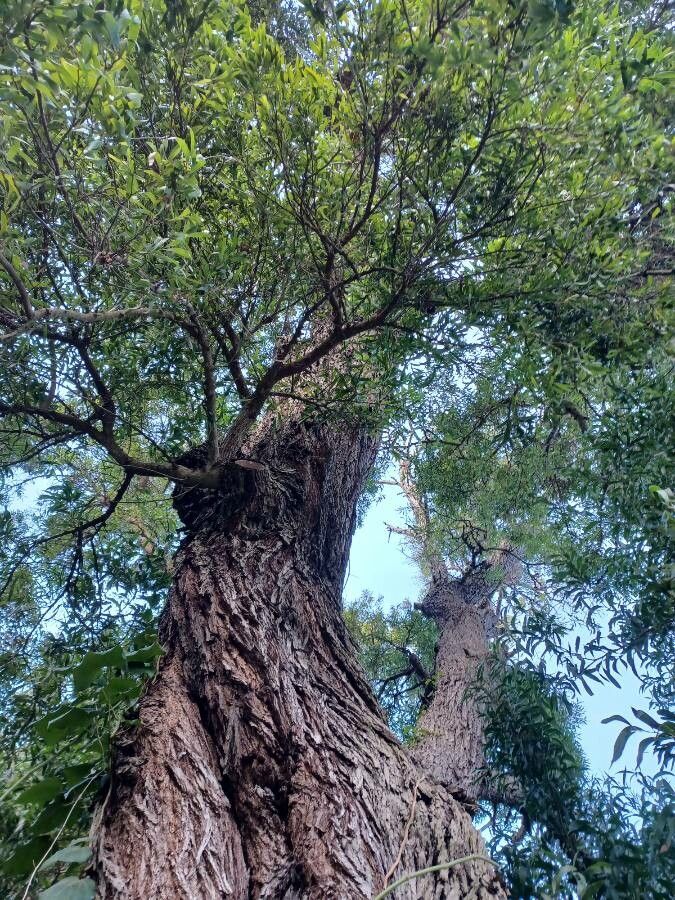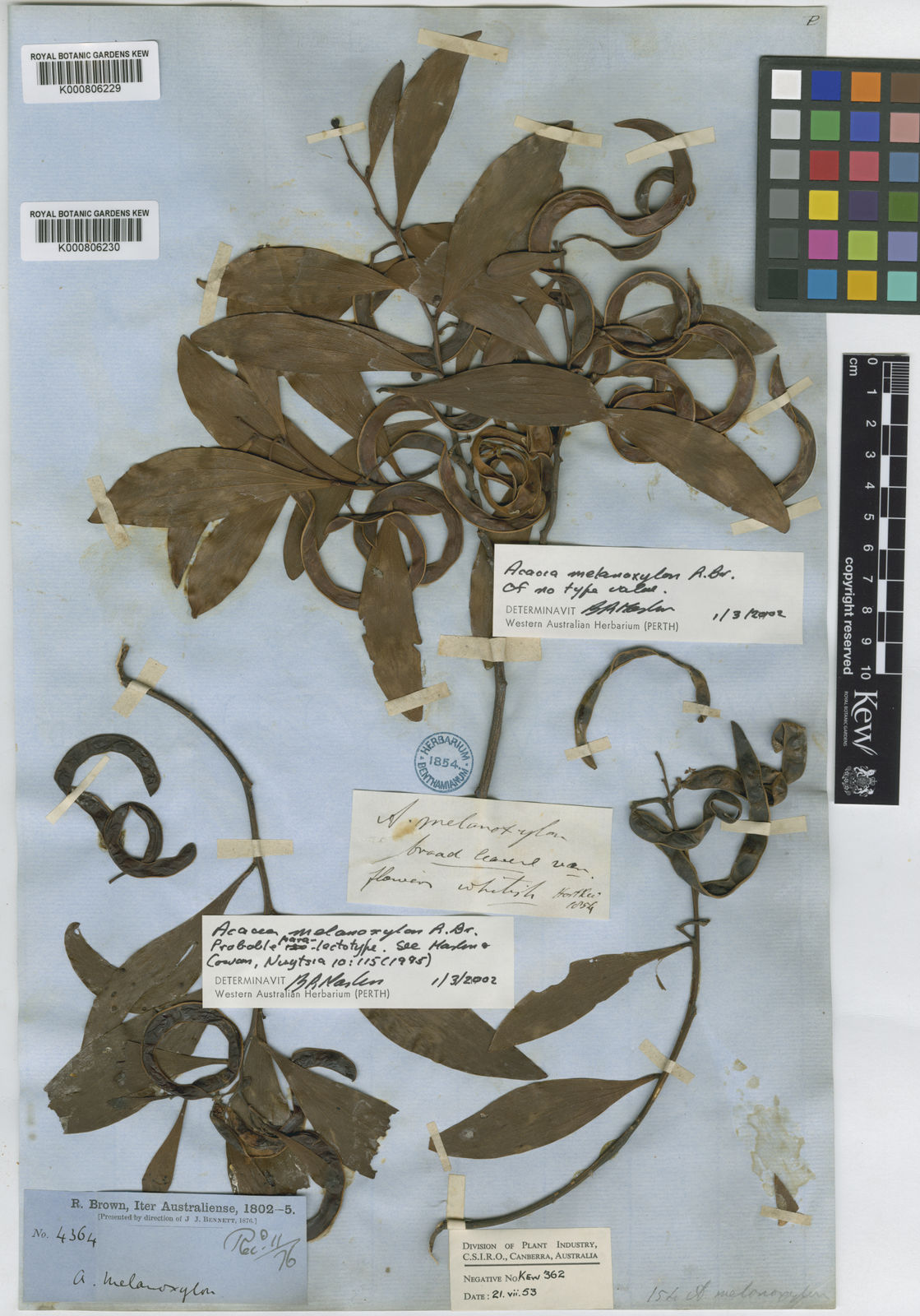Black Acacia
acacia melanoxylon
Also known as: ["Australian Blackwood","Sally","Blackwood Acacia"]
Overview
A fast-growing, evergreen tree native to Australia, known for its dark timber and fragrant flowers.
Benefits & Perks
["fast growing","fragrant flowers","wildlife attractant (bees, butterflies, birds)","drought tolerant"]
Botanical Classification
| Phylum: | Magnoliophyta |
| Class: | Magnoliopsida |
| Order: | Fabales |
| Family: | Fabaceae |
| Genus: | Acacia |
| Botanical Name: | Acacia melanoxylon |
Plant Characteristics
Basic Information
- Category: Trees
- Suitable Location: outdoor garden in a sheltered spot with good air circulation
- Suitable For:
- Is Weed: No
- Allergenicity: low
Environmental Needs
- Climate: {"temperatureRange":"5–35°C"}
- Hardiness: {"zones":"9–11"}
- Misting: rarely required, only if ambient humidity is very low
- Drainage: Fast-draining to prevent waterlogging.
- Soil Type: Well-draining, loamy soil with added organic matter for fertility.
Maintenance Level
- Maintenance Level: moderate
- Toughness Level: high
- Pruning Frequency: Annually in late winter or early spring before new growth begins.
- Pruning Intensity: Moderate to heavy, depending on desired shape and size control.
Care Details
Ideal Sunlight Coverage:
Full sun (6–8 hours/day) with tolerance to partial shade, especially in hot climates. Adjust exposure based on seasonal intensity.
Sunlight Tolerance Tips:
Acclimate plants gradually to intense sunlight; protect from harsh afternoon sun in arid regions; ensure adequate light indoors with supplemental grow lights.
Care Requirements
Care Difficulty
moderatemoderate
Sunlight
full sun to partial shade
Rotate plant for even growth; use sheer curtains to filter intense light; avoid placing near heat sources.
Watering
every 7–14 days, allowing soil to dry between waterings
Water thoroughly until runoff, allow soil to dry partially between waterings, and avoid overwatering to prevent root rot.
Soil
well-drained, loamy soil with moderate fertility
pH: Slightly acidic to neutral (pH 6.0–7.0).
Use raised beds in heavy soils; avoid compacted soil; test pH annually.
Temperature
Prefers 65–85°F (18–29°C). Tolerates mild frosts but thrives in warm, temperate climates.
Monitor microclimates; use shade cloth in summer; protect roots from extreme cold.
Fertilizing
every 2–3 months during active growth
Apply fertilizer before rain for better absorption; stop feeding in fall to prepare for dormancy; use organic options for slow release.
Propagation
Methods
Stem cuttings or seed. Cuttings root more reliably but seeds offer genetic diversity.
Step-by-Step Propagation Guide
- Take 4–6 inch cuttings.
- Remove lower leaves.
- Dip in hormone.
- Plant in medium.
- Maintain humidity.
- Transplant when rooted.
Best Time: Spring or early summer when temperatures are warm and humidity is moderate.
Environment
Warm (70–75°F), high humidity (70–80%), and bright indirect light.
Medium
Well-draining mix of perlite and peat moss, or cactus/succulent soil.
Hormone
Recommended for cuttings to improve rooting success.
Timeline
Cuttings root in 4–8 weeks; seed germination takes 2–4 weeks with establishment over 6–12 months.
Tools Needed
Pruners, rooting hormone, pots, misting spray bottle, heating mat.
Quick Tips
Use fresh seeds for better germination; keep cuttings out of direct sun; maintain consistent moisture.
Pruning & Repotting
Pruning Guide
Method
Selective thinning, heading back, and removal of crossing branches to maintain structure.
Pruning Plan
Shape the plant, remove dead/diseased wood, and encourage airflow to reduce disease risk.
Tools
Pruning shears, loppers, saw (for larger branches), sterilizing solution.
Checklist
Sterilize tools; prune during dormancy; make clean cuts; dispose of diseased material.
Repotting Guide
Best Season
Early spring before active growth starts.
Pot Size
Increase pot size by 2–3 inches in diameter.
Method
Remove plant gently; trim roots if needed; place in slightly larger pot with fresh soil; water lightly.
Suggestions
Repot every 2–3 years or when roots fill the container to refresh soil and provide space.
Checklist
Check root bound status; prepare new pot; use fresh soil mix; water after repotting.
Advanced Care Tips
Watering Mastery
Watering Checklist
Check soil moisture before watering; water deeply; ensure drainage; adjust for season.
How to Apply Water Properly
Water at the base of the plant, ensuring moisture reaches the root zone. Water early in the morning to minimize evaporation and allow foliage to dry.
Watering Schedule Tips
Water deeply once every 7–10 days during active growth, reducing frequency to every 2–3 weeks in winter. Adjust based on rainfall and soil moisture.
Soil Improvement
Add perlite or coarse sand for drainage; incorporate compost for fertility; ensure aeration with organic matter.
Temperature Stress Management
Signs of Temperature Issues
Chlorosis or leaf drop in extreme heat; stunted growth or browning in cold stress.
Cold Stress
Low temperatures slow growth and may cause leaf drop or dieback, especially below 20°F (-6°C).
Solution: Protect with frost cloth in winter; plant in sheltered locations; avoid waterlogged soil to prevent cold root damage.
Hot Stress
Excessive heat can lead to wilting, leaf scorch, or reduced flowering if water and shade are inadequate.
Solution: Provide afternoon shade; increase watering frequency; use mulch to retain soil moisture.
Fertilizing Guide
Fertilizing Checklist
Check soil pH; follow label instructions; avoid over-fertilizing; water after application.
Fertilizing Method
Use balanced, slow-release fertilizer in spring; dilute liquid fertilizer to half-strength monthly during growing season; avoid feeding in winter.
Common Problems & Solutions
Toxicity Warning
Cats
ToxicCats are susceptible to toxicity from Acacia melanoxylon, particularly from its seeds and bark. The plant's toxic compounds, including cyanogenic glycosides, can cause significant gastrointestinal distress and neurological issues in felines.
⚠️ Symptoms:
🌿 Toxic Parts:
⚡ Toxic If:
if eaten
Dogs
ToxicIngestion of Acacia melanoxylon seeds and bark by dogs can lead to toxicity due to the presence of cyanogenic glycosides and other alkaloids. These compounds disrupt normal metabolic functions and can cause severe gastrointestinal and neurological symptoms.
⚠️ Symptoms:
🌿 Toxic Parts:
⚡ Toxic If:
if eaten
Humans
ToxicAcacia melanoxylon contains toxic compounds, primarily in its seeds and bark, which can cause adverse physiological effects upon ingestion. The plant's toxicity is due to the presence of cyanogenic glycosides and other alkaloids that interfere with normal metabolic processes.
⚠️ Symptoms:
🌿 Toxic Parts:
⚡ Toxic If:
if eaten
Frequently Asked Questions
Q: Is Acacia melanoxylon suitable for small gardens?
A: No, due to its large size, it is best suited for spacious outdoor landscapes.
Q: Does this plant attract wildlife?
A: Yes, it is known to attract bees, butterflies, and birds with its fragrant flowers.
Q: Is the wood of Acacia melanoxylon valuable?
A: Yes, its dark timber is highly valued for furniture and musical instruments.
Quick Reference
| Family: | Fabaceae |
| Care: | moderate |
| Light: | full sun to partial shade |
| Water: | every 7–14 days, allowing so |
Get Expert Care Tips
Download the Plantious app for personalized care reminders and plant identification!
Google Play App Store








